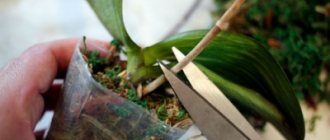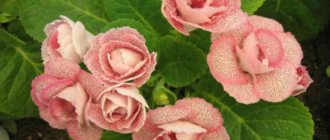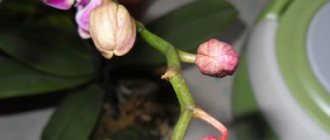Azalea is a beautiful plant, especially in those short moments when it is covered with flowers. Not everyone has seen an azalea during the flowering period, but those who have seen it will not doubt for a minute that even the most difficult care is worth it.
For some reason, many beginners and experienced gardeners consider this flower to be very delicate and extremely difficult to care for. But, having gotten to know him better, everyone is convinced that they were mistaken. This plant is characterized by average care requirements; there are such capricious representatives of the flora that azalea would not stand next to. Knowing the necessary rules and preferences of this flower, you can easily provide it with all the necessary conditions.
A special place in caring for azaleas is occupied by the period after active flowering. At this time, the plant is slightly weakened, and it needs to ensure the correct transition to hibernation mode. This period of time is extremely important, since proper rest will ensure a longer life of the azalea and its lush flowering in subsequent times.
What can you say about azalea blooming? When does this happen?
Different plants bloom at different times of the year and for different durations. Azalea is one of those representatives of the flora that is unlikely to please with a very long flowering period. Azalea is also called rhododendron; there are many of its species and subspecies, each of which has its own periods of active and beautiful time.
Conventionally, rhododendrons can be divided into three subgroups, based on their flowering period:
- early varieties;
- medium grades;
- - late varieties.
From the names it’s easy to guess when which varieties prefer to open their buds. Another feature of all types and varieties of azaleas is that for the most part, the active period for them begins not in the warm season, but in winter.
So, early varieties begin to bloom starting in December, some at the beginning, some towards the end. These types of azaleas already end their active phase in early April, their flowers dry up and they shed their petals. Medium varieties, for the most part, bloom buds in January. There are a large number of these subspecies, and therefore some bloom closer to the beginning of a given month, and some in the middle and at the end. For these varieties, the flowering period ends in March, by which time they shed all their petals. Late varieties of rhododendron, in turn, begin to bloom only with the onset of spring, in March. The duration of their beautiful period is the shortest, only one month. And in April they already fade, and the flower petals fall off.
Knowing these features of azaleas, you can build a whole greenhouse of rhododendrons in your home, which will delight the eye all winter and early spring.
Thanks to the wide variety of colors and varieties, throughout the winter and early spring there will be a change in design that will bring a little beauty and comfort to your home. It is very important after the end of flowering to carry out all the procedures correctly, after which the azalea can go to rest until the start of the next season. What exactly needs to be done, when and how – all this is discussed below in the article.
Description of the azalea plant
It is popularly believed that azalea blossoms help restore vision if you look at the inflorescence for a long time.
The shrub belongs to the Heather family, the genus Rhododendron. The leaves on the stems remain green all year round, and the flowers appear in the cold season and grow in a beautiful lush head. Literally, Rhododendron is translated as “pink tree,” but the flowers of the plant can be not only pink, but also white, red or purple. In nature, the azalea bush is found in North America and Eurasia.
The history of the bush goes back to the beginning of the 19th century. The first attempts to domesticate azaleas were unsuccessful. For the first time, a scientist from Holland, Brainius, saw and described azalea; he tried to tame a shrub taken from England in his homeland, but the plant was unable to acclimatize. The next person to try to plant azaleas was the scientist Conners, whose attempts also ended in failure.
It was only the third time that the azalea was tamed. Captain Welbank found the bush in India at the beginning of the 19th century, after which he brought it to his homeland and still took root. After this, the plant became widespread, and scientists managed to develop many hybrids and varieties from the first shrub.
The flower is quite finicky to care for and requires attention and care. To ensure that you enjoy flowering every year, follow the basic instructions and recommendations for growing azaleas.
What should you do with a faded azalea and why?
Few people know, but many actions for caring for indoor rhododendron are far from being a whim of the plant. Such care not only allows azaleas to look good, but also to produce beautiful flowers for many seasons in a row. Also, regularly caring for your pet will help extend its overall lifespan.
Houseplants often require quite a lot of care - regular watering is unlikely to be enough to maintain their beauty and lively appearance. Azalea is no exception, a particularly important period is after the end of flowering. As soon as the last petals wither and fall, you need to immediately carry out all actions. It is important to do this before it goes into hibernation, since a sleeping plant cannot be touched, and, in general, there is no need to disturb it again. Also, if everything is done correctly, the decline of rhododendron by the rest season will be more gentle. And the period of recovery and preparation for the next flowering will be more productive.
So, what does azalea need after flowering? Mandatory procedures that are carried out every year are:
- pruning and shaping the crown of the plant;
- pinching and thickening the crown of the plant.
In addition to the mandatory procedures, one more procedure is performed - transplantation. But there is no need to do this every year. Transplantation into a new pot is carried out when the plant has already grown beyond its current size, or if it has been living in one pot for a long time. If azaleas do not change the soil for a long time, then eventually they will stop developing and delight you with their beauty. This is necessary in order to renew some underground parts of the rhododendron, provide an influx of new nutrients, and also remove excess waste soil.
By trimming branches after flowering, you can give your azalea different shapes. Thus, this care action will not only bring benefits, but will also have decorative value for this plant. Most often, rhododendrons are given the following appearance options:
- something like a tree, with a thick main stem and a ball-shaped crown;
- cone-shaped bush, or pyramid shape;
- an ordinary bush in the shape of a ball is the simplest and most popular shape for azaleas.
If you care for the azalea correctly after flowering, then this indoor plant can be used as a bonsai tree. This option is considered very decorative and attractive to many gardeners. High-quality step-by-step care helps rhododendron maintain its distinctive appearance for a long time.
Diseases and pests
Due to violation of the rules for caring for azalea, problems arise with its cultivation:
- Leaves fall - insufficient watering and low air humidity.
- leaves turn yellow - the soil is not acidic enough.
- Poor flowering of azaleas - lack of nutrients, high temperature, lack of timely pruning.
- Dry spots on the leaves are burns due to direct sunlight.
- Light elongated spots - the plant is affected by leaf roller larvae.
- The buds are green, but the flowers do not develop - the plant is in a draft, excessive watering.
- Chestnut-colored leaves and buds wither - insufficient watering and too high a temperature.
Among the pests it can be affected by spider mites, mealybugs, whiteflies, azalea moths, strawberry red mites, and thrips.
What are the basic rules for pinching azaleas after flowering?
In order for the crown of the rhododendron to be lush and dense, it must be pinched regularly. Traditionally, this is done immediately after the plant has flowered. It is very important not to miss this moment, because after dropping the petals, the azalea quickly goes into hibernation. Under no circumstances should such a plant be pinched. If you do similar actions with a dormant plant, it will simply die.
Most often, a lush crown is formed after the third pinching. By this moment, quite a lot of small branches have grown, which give the density to the green part of the plant. Therefore, in order for your flower to also have a chic crown, you need to learn a craft like pinching.
Young green shoots need to be pinched. All of them are soft and juicy enough that you can pinch them off simply with your hands. If you are not comfortable doing this with your fingers, then you can use small scissors, even small ones will be fully enough. First of all, you need to pinch the tops. They are the ones that grow very long, which is why they give the plant a disheveled and unkempt appearance. Quite often you have to do this several times throughout the summer.
It is important to know that pinching cannot be done on branches that are too young and small. This procedure is performed only when there are at least three or four buds on the shoot. If the shoots are too young, then there is a possibility that after pinching they will simply die.
After pinching the upper branches, active growth of side shoots begins on them. When these parts of the plant reach the required size, they are also subject to this procedure. It also happens that young branches begin to grow in the wrong direction. If they are directed inward, then such shoots must be completely removed.
In order for the plant to be not only beautiful, but also healthy, you need to constantly monitor the density of its crown. It may be lush, but even in this case it is worth remembering how important it is that sunlight can penetrate deep into the branches, and not just glide across the surface. This will help protect the azalea from pests that are constantly trying to find a secluded place to live. Spider mites quite often settle in the darkened crown, which can very quickly lead to the death of the plant.
All rhododendrons that have not reached the age of three years should form their upper green part thanks to proper and careful pinching.
How to choose an azalea in a store
To ensure that the plant acclimatizes well in your apartment, when purchasing azaleas, follow these recommendations:
- Choose a medium-sized bush. It will be more difficult for a more mature plant to adapt to a new environment, and a small one will not have enough strength to grow and acclimatize at the same time.
- Look closely at each leaf on the stem. There should be no stains, inclusions or cobwebs on their surface.
- Don't choose a flower with falling leaves. Shake the pot a little and make sure the leaves stay in place. The presence of dry fallen leaves indicates that the plant has dried out and most likely cannot be restored.
- At the same time, make sure that the leaves are not too large or dark green in color. Such facts indicate that the plant is fed with hormones.
The best purchase option would be a faded azalea or a plant that has just released buds.
What are the basic rules for pruning azaleas after flowering?
Trimming azalea branches is a very important action in caring for this plant. In order to obtain high-quality decorative results every year, it is necessary to regularly shorten young shoots. This procedure helps the plant and directs its forces to the development of buds, and not to the development of green mass. Some gardeners believe that to form a crown, it is enough to just pinch the azalea after flowering. But this is a fundamentally wrong idea, because you need to care not only for the youngest shoots, but also for those that have been growing for several years.
Pruning is carried out immediately after the last flower on the plant has faded. Never prune a rhododendron that has already switched to rest mode. Such a plant is unlikely to recover from such a procedure.
Before pruning, all sepals that could not fall off on their own are manually removed from the azalea. To do this, use a fairly sharp garden pruner of a suitable size. It is necessary to disinfect it before the procedure of shortening the branches, for example, with alcohol. If this is not done or done poorly, then there is a risk of introducing some kind of infection or disease to a fresh cut of the plant.
Pruning is carried out for absolutely all shoots. First, all branches that grow incorrectly are removed, directed inward, and aggressively prevent other branches from developing. After this, it is worth inspecting the azalea for dried shoots, weak, undeveloped, broken or injured in any other way. All these branches also need to be removed, since they provide neither practical nor aesthetic benefit to the gardener and his home. After pruning all unsuitable shoots, you can begin to shorten healthy ones. They also require care, because without regular pruning, they will begin to grow green mass instead of forming flower buds. And if you miss one procedure, you will definitely lose a beautifully formed rhododendron. After all, without these actions, this bush looks very untidy. Shortening is carried out so that at least three to five nodes remain on each branch. In extreme cases, you can leave about six buds.
After scheduled pruning, it is also worth disinfecting each cut. To do this, you can purchase specially designed medications that will prevent infections and bacteria from getting inside the rhododendron. But there is a more budget option - crushed coal (black). Disinfection is most often carried out for thicker and lignified branches. Since for thin young people there is simply practically no need for this.
These are the rules for caring for rhododendron after flowering. Each action must be performed consistently and correctly, because not only the appearance of the bush depends on it, but also its health and life expectancy. However, this is not all that azaleas may need after the flower period. In the second part we will talk about other, no less necessary actions, which also need to be done only in this short period of time.
When should I replant my azalea?
After the crown has been formed and cleared of unusable branches, the azalea can be replanted. In the first few years of rhododendron development, you can do this every year, as it is very active and grows quickly. Further, the transplant can be done as needed and based on the condition of the azalea. It is very important to choose the right moment for this, since much of the success depends on whether the plant can take root in the new pot. Under no circumstances should replanting be done during the winter season; this is the active phase, during which all the azalea’s energy goes into feeding and maintaining the flower arrangement. Also, it is very undesirable to do this when the rhododendron is dormant, because it simply will not take root. The best time is after flowering and carrying out all procedures with the above-ground part of the plant.
Before you begin, you need to choose the right soil mixture. Gardening stores sell many options that are ideal for rhododendron. But it is not at all necessary to buy ready-made soil, because you can easily prepare it at home with your own hands - it’s very easy. First, let's determine what is needed to prepare the soil for an azalea.
You will need the following:
- leaf soil;
- heather soil;
- peat soil;
- coniferous land;
- drainage.
The correct ratio for these four types of soil is (1:1:1:2). Coniferous soil is quite important and useful for the quality growth of azaleas. After mixing the soil mixture, it is necessary to ensure sufficient drainage for it. To make water seep into the soil more easily, you can add fine river sand to it. Also, special drainage stones that are placed at the bottom of the pot are very suitable.
Thus, we smoothly moved on to choosing the right pot for replanting the azalea. Its appearance and material do not really matter. It is important that it is slightly larger than the previous one. Also, if you initially chose an unusual shape for the pot, then you should take this into account when replanting. After all, the root system of the plant must fit comfortably in a new place so that the azalea can take root and develop for the next year or several.
The correct sequence of actions when replanting an azalea is very important, because only if all the rules are followed can you get a healthy and beautiful plant. For this procedure you will need the following:
- clean water at room temperature and a basin for it;
- sharp large scissors or pruning shears;
- prepared soil mixture;
- drainage particles
- pot for transplanting.
The very first thing is to place drainage at the bottom of the pot; expanded clay is very suitable. It is necessary to pour a layer about two or three centimeters thick. After this, you can begin to remove the azalea from its old place of residence. Carefully remove the plant so as not to damage the root system. Place in a bowl of water so that it covers almost all the roots and leave for half an hour. About two-thirds of the soil should become soaked and detached. If half an hour is not enough, then leave it for some more time and check that too much soil is not lost. To speed up the process, you can water the roots with a garden watering can, and finally rinse with clean water.
After cleaning the root system, you can begin to inspect it for the presence of diseases, infections, and putrefactive processes. If this is noticed, then such areas should be removed.
Next, you can place the treated plant in a new pot and cover it with soil. It is very important not to make the soil level higher than it was, as there is a high probability of filling up the root collar.
Also, if the old soil has not suffered any serious damage, then you can not wash it out, but simply place it in a larger pot and add fresh soil.
It is very good to water the azalea with zircon immediately after transplantation; this substance helps heal wounds and build up the root system. The rhododendron should be placed in a warm place, but out of direct sunlight. After two or three days, you can water the plant again with zircon. After this time has passed, you can return to normal watering of the azalea. For the first two months, you cannot fertilize the transplanted rhododendron, as this will only harm the plant.
Basic care requirements for azaleas after flowering
In order for the azalea to be healthy and full of energy by the next flowering season, it is necessary to properly care for it throughout the year. This is especially true for the recovery period, during which the most active regeneration and other recovery processes occur.
Let's start with what environmental characteristics should be in order for an azalea to feel comfortable. After flowering, it is very important to maintain a lower temperature; this plant is quite demanding on this parameter. An ideal value of about 12-16 degrees, too warm air will interfere with proper recovery processes. In this case, the humidity should be maintained very high, at least 70%. An air humidifier copes with this task perfectly, in addition, you can spray the plant from time to time. The placement of the azalea also plays a big role; it is necessary to provide it with a dark place, without direct sunlight and excess light. You can put it in a dark corner or in the darkest room in the house.
The azalea also needs to be watered and fertilized correctly. Cool water is suitable for this plant; melted water or rain water has a beneficial effect on the condition of the flower. As a last resort, you can use ordinary tap water, which has been left in the vessel for some time. The most pleasant water temperature for azaleas is about 17 degrees; you should not make the liquid too cold or too hot. A fairly important parameter for water is its acidity, add a little citric acid, this will have a good effect on your plant. Fertilizer also needs to be done correctly. After flowering, azalea needs a lot of nutrients. Therefore, special fertilizing needs to be done once or twice a week; the following compounds are very suitable:
- ammonium sulfate;
- superphosphate;
- potassium sulfide.
It is very important to provide azaleas with enough nitrogen, which is so important for the plant after flowering. If you replenish all its reserves, then the azalea will be able to actively grow and recover, and this will also help the growing season. But, if after flowering you replanted the azalea, then you definitely need to wait a while and not apply any fertilizing, and also follow the necessary watering regime.
Feeding to help the plant
To maintain the required soil acidity, plants can be watered occasionally, for example, once every two weeks, with a solution of citric acid. To do this, dilute 1 teaspoon of acid in two liters of water. Another way to acidify the soil is to water the flower with a solution (0.2%) of sulfuric acid after 3-4 months. Each time this should be done only after the soil has been moistened.
There are special fertilizers used to feed beautifully flowering plants. This is, for example, “Kemira” or “Ferovit”. They are used as a means to prevent various diseases.
Common mistakes when caring for azaleas
No matter how carefully you care for your pet, it is quite normal to make one or more small mistakes. But this has a bad effect on the condition of the plant. Therefore, let's look at what mistakes gardeners often make:
- incorrect composition of the soil mixture. Like any other plant, azaleas require certain qualities of the soil and the elements that it contains. If the soil is unsuitable, the plant is unlikely to develop and thrive;
- using dirty tools when working with azaleas. Gardening tools are used for procedures such as pruning or pinching. If you do not disinfect them, then there is a possibility of infection spreading to a fresh cut of a branch;
- damage to roots during transplantation. As mentioned earlier, when replanting, you need to soak the roots from the soil. And if you try to do this manually, the small roots will come off, which will have a very bad effect on the condition of the azalea, even to the point of its death. Therefore, be as careful as possible when replanting and working with the root system of this flower;
- Do not trim or pinch azaleas. In addition to being important for the appearance of the azalea, these procedures also affect the lifespan and quality of the plant. If you do not trim or pinch a flower for a long time, it is unlikely to please you with its appearance and health in the future;
- adding fertilizer immediately after transplanting. At first glance, it seems that after transplanting an azalea it is necessary to give it as many useful substances as possible, but this is not at all the case. At first, she needs a little water and zircon, and everything else can only harm the plant;
- when irrigation is done with water of unsuitable quality. Watering an azalea with anything is far from what it needs. If the water is too hot or cold, it is drawn from a tap and has not settled, then such a liquid may not only not be beneficial. Such liquid will only cause harm and can lead to infections and the formation of diseases;
- incorrect dosage of fertilizers. If you do not give the azalea any useful substances at all, then it is unlikely that it will grow well and produce beautiful flowers, and over time it will completely wither. Overfeeding with fertilizers can also lead to undesirable consequences. A plant oversaturated with minerals and other nutrients will also soon begin to wither and die after a while.
Try to avoid these mistakes, then the azalea will definitely grow lush and beautiful.
Caring for this plant in this way will help it recover well and gain strength during the rest period. Follow the recommendations described above to ensure that your azalea is always well-groomed and beautiful.
Propagation of domestic azaleas
Azaleas can be propagated at home. The most famous and effective methods are: cuttings, dividing the bush and propagation by layering.
Cuttings
For guaranteed results, use a beautiful, lush and healthy plant. Prune cuttings in spring or summer.
Procedure:
- Prepare suitable soil with sufficient acidity.
- Place about 3 cm of drainage in a small wide container and sprinkle with a small amount of river sand.
- Fill the pot with soil.
- Cut the cuttings at an angle near the leaves or buds. The optimal cutting height is 9 cm. After pruning, remove the lower leaves from the shoot.
- Stimulate the formation of roots by dipping the cuttings in a special solution, for example, “Heteroauxin”, “Zircon” or “Kornevin”. Dilute the substance according to the instructions in water and place the cuttings in a container for about 6 hours.
- After feeding, move the cuttings to the substrate. Please note that there must be a distance of at least 3 cm between shoots, and the planting depth should not exceed 4 cm.
- Cover the planted azalea with polyethylene and spray it daily.
- Provide the seedlings with the proper temperature (from +23 to +25 degrees) and air humidity.
If you did everything correctly, after 1.5-2 months the cuttings will take root.
Dividing the bush
A very simple way to propagate azaleas. For division, use an older plant, at least 3–4 years old. Carefully divide the shrub, paying utmost attention to the preservation of the fine hairs of the roots. Plant the new plant in a suitable substrate and place it in a well-lit room. It is fundamentally important during the adaptation period of a newly planted bush to properly care for the flower.
By layering
This method of propagation is reminiscent of cuttings, but is less labor-intensive.
Action plan:
- Bend the lower stem to the soil and secure with wire or a paper clip.
- Sprinkle the attached area with soil.
- Care for the branched stem as you would a mature plant.
- After about six months, when the new flower takes root, it can be planted in another pot.











